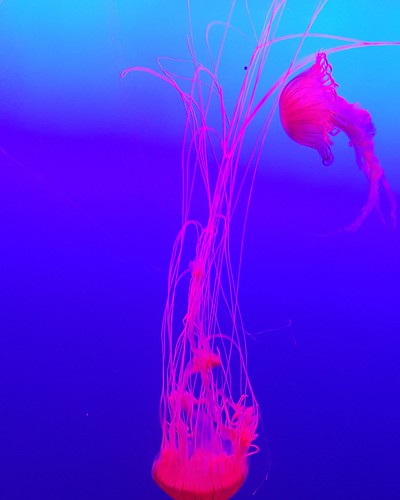Oxyphenyl)tetrahydro-furan-3-yl]methyl-(2Z)-2-methylbut-2-en-oate) was isolated as previously described from 5.3 kg sub-aerial parts of Edelweiss (Leontopodium alpinum Cass.) which were obtained from Swiss horticultures [14]. The purity of the obtained 5ML (78.0 mg) according to LC-DAD/MS- and NMR examination was found to be .98 . Furthermore, a voucher specimen (CH 5002) has been deposited at the herbarium of the Institute of Pharmacy/Pharmacognosy, University of Innsbruck, Innsbruck, Austria.Cell cultureHuman umbilical vein endothelial cells (HUVECs) and smooth muscle cells were MedChemExpress 57773-63-4 purchased from Promocell (Vienna, Austria) and cultured as previously described [15,16].Microarray analysesAfter incubation of primary HUVECs for 6 or 24 h with 10 mM of 5ML, cells were detached by trypsinisation, and collected by centrifugation (300 g, RT, 59). Cell pellets were stored at -20uC. For RNA preparation, the pellets were resuspended in TriReagent (Sigma) and RNA was isolated as previously described [19,20]. Total RNA was further purified using the RNeasy kit (Qiagen, Hilden, Germany). RNA quantity and integrity were assessed by OD260/280 measurements and Agilent “lab-on-a-chip” technology (2100 Bioanalyzer, Agilent, Palo Alto, CA). Quality requirements were OD260/280 ratios of 1.8 to 2.2 and an 18S to 28S ratio of 1.8  to 2.2. Hybridization target preparations were performed according to protocols recommended by Affymetrix (Affymetrix Technical Manual, protocol 2). Briefly, 5 mg total RNA was reverse transcribed using an oligo(dT)-T7 promotor primer, before second strand synthesis by E.coli DNA polymerase (Affymetrix one cycle cDNA synthesis kit). After purification of double stranded cDNA with the Affymetrix GeneChip Sample Cleanup FD&C Yellow 5 manufacturer Module, biotin-labeled cRNA was produced by T7 polymerase (Affymetrix IVT Labeling kit). After lab
to 2.2. Hybridization target preparations were performed according to protocols recommended by Affymetrix (Affymetrix Technical Manual, protocol 2). Briefly, 5 mg total RNA was reverse transcribed using an oligo(dT)-T7 promotor primer, before second strand synthesis by E.coli DNA polymerase (Affymetrix one cycle cDNA synthesis kit). After purification of double stranded cDNA with the Affymetrix GeneChip Sample Cleanup FD&C Yellow 5 manufacturer Module, biotin-labeled cRNA was produced by T7 polymerase (Affymetrix IVT Labeling kit). After lab  on a chipbased quantification and integrity control, 20 mg cRNA was fragmented by alkaline treatment (Affymetrix GeneChip Sample Cleanup Module), and 15 mg fragmented cRNA was added to the Affymetrix hybridization cocktail (300 ml final volume). The arrays (Human genome U133 Plus 2.0; Affymetrix) were washed and stained according to the recommended Fluidics Station protocol (EukGE-WS2 version 5_450). Fluorescence signal intensities from each feature on the microarrays were determined using the Affymetrix GeneChip Scanner 3000 and GCOS software (version 1.2), according to the manufacturer’s recommendations. The raw data from all arrays were normalized using the RMA package for “R” according to [21]. Microarray analyses were performed on three independent experiments, and the genes reported to beWound scratch assayMigration of SMCs and HUVECs was examined by a wound healing assay. To do so, cells were grown in six-well plates to 80 confluence. A wound was created by scrapping across the surface of each cell monolayer using a pipette tip. Thereafter, the wells were gently washed to remove detached cells followed by addition of culture medium with the indicated concentrations of 5ML. Images of the scratch were taken 6 hours after wound creation with an Olympus microscope (Olympus CKX41, Austria). Dimension of the scratch was analyzed using the Photoshop CS4 software and reduction of the scratch area by migrating cells was calculated. Results are expressed as percent of scratch closure after 6 hours.Capillary tube formation assayTo analyze capillary tube-formation, 24-well-plates were coated with 200 ml growth factor reduc.Oxyphenyl)tetrahydro-furan-3-yl]methyl-(2Z)-2-methylbut-2-en-oate) was isolated as previously described from 5.3 kg sub-aerial parts of Edelweiss (Leontopodium alpinum Cass.) which were obtained from Swiss horticultures [14]. The purity of the obtained 5ML (78.0 mg) according to LC-DAD/MS- and NMR examination was found to be .98 . Furthermore, a voucher specimen (CH 5002) has been deposited at the herbarium of the Institute of Pharmacy/Pharmacognosy, University of Innsbruck, Innsbruck, Austria.Cell cultureHuman umbilical vein endothelial cells (HUVECs) and smooth muscle cells were purchased from Promocell (Vienna, Austria) and cultured as previously described [15,16].Microarray analysesAfter incubation of primary HUVECs for 6 or 24 h with 10 mM of 5ML, cells were detached by trypsinisation, and collected by centrifugation (300 g, RT, 59). Cell pellets were stored at -20uC. For RNA preparation, the pellets were resuspended in TriReagent (Sigma) and RNA was isolated as previously described [19,20]. Total RNA was further purified using the RNeasy kit (Qiagen, Hilden, Germany). RNA quantity and integrity were assessed by OD260/280 measurements and Agilent “lab-on-a-chip” technology (2100 Bioanalyzer, Agilent, Palo Alto, CA). Quality requirements were OD260/280 ratios of 1.8 to 2.2 and an 18S to 28S ratio of 1.8 to 2.2. Hybridization target preparations were performed according to protocols recommended by Affymetrix (Affymetrix Technical Manual, protocol 2). Briefly, 5 mg total RNA was reverse transcribed using an oligo(dT)-T7 promotor primer, before second strand synthesis by E.coli DNA polymerase (Affymetrix one cycle cDNA synthesis kit). After purification of double stranded cDNA with the Affymetrix GeneChip Sample Cleanup Module, biotin-labeled cRNA was produced by T7 polymerase (Affymetrix IVT Labeling kit). After lab on a chipbased quantification and integrity control, 20 mg cRNA was fragmented by alkaline treatment (Affymetrix GeneChip Sample Cleanup Module), and 15 mg fragmented cRNA was added to the Affymetrix hybridization cocktail (300 ml final volume). The arrays (Human genome U133 Plus 2.0; Affymetrix) were washed and stained according to the recommended Fluidics Station protocol (EukGE-WS2 version 5_450). Fluorescence signal intensities from each feature on the microarrays were determined using the Affymetrix GeneChip Scanner 3000 and GCOS software (version 1.2), according to the manufacturer’s recommendations. The raw data from all arrays were normalized using the RMA package for “R” according to [21]. Microarray analyses were performed on three independent experiments, and the genes reported to beWound scratch assayMigration of SMCs and HUVECs was examined by a wound healing assay. To do so, cells were grown in six-well plates to 80 confluence. A wound was created by scrapping across the surface of each cell monolayer using a pipette tip. Thereafter, the wells were gently washed to remove detached cells followed by addition of culture medium with the indicated concentrations of 5ML. Images of the scratch were taken 6 hours after wound creation with an Olympus microscope (Olympus CKX41, Austria). Dimension of the scratch was analyzed using the Photoshop CS4 software and reduction of the scratch area by migrating cells was calculated. Results are expressed as percent of scratch closure after 6 hours.Capillary tube formation assayTo analyze capillary tube-formation, 24-well-plates were coated with 200 ml growth factor reduc.
on a chipbased quantification and integrity control, 20 mg cRNA was fragmented by alkaline treatment (Affymetrix GeneChip Sample Cleanup Module), and 15 mg fragmented cRNA was added to the Affymetrix hybridization cocktail (300 ml final volume). The arrays (Human genome U133 Plus 2.0; Affymetrix) were washed and stained according to the recommended Fluidics Station protocol (EukGE-WS2 version 5_450). Fluorescence signal intensities from each feature on the microarrays were determined using the Affymetrix GeneChip Scanner 3000 and GCOS software (version 1.2), according to the manufacturer’s recommendations. The raw data from all arrays were normalized using the RMA package for “R” according to [21]. Microarray analyses were performed on three independent experiments, and the genes reported to beWound scratch assayMigration of SMCs and HUVECs was examined by a wound healing assay. To do so, cells were grown in six-well plates to 80 confluence. A wound was created by scrapping across the surface of each cell monolayer using a pipette tip. Thereafter, the wells were gently washed to remove detached cells followed by addition of culture medium with the indicated concentrations of 5ML. Images of the scratch were taken 6 hours after wound creation with an Olympus microscope (Olympus CKX41, Austria). Dimension of the scratch was analyzed using the Photoshop CS4 software and reduction of the scratch area by migrating cells was calculated. Results are expressed as percent of scratch closure after 6 hours.Capillary tube formation assayTo analyze capillary tube-formation, 24-well-plates were coated with 200 ml growth factor reduc.Oxyphenyl)tetrahydro-furan-3-yl]methyl-(2Z)-2-methylbut-2-en-oate) was isolated as previously described from 5.3 kg sub-aerial parts of Edelweiss (Leontopodium alpinum Cass.) which were obtained from Swiss horticultures [14]. The purity of the obtained 5ML (78.0 mg) according to LC-DAD/MS- and NMR examination was found to be .98 . Furthermore, a voucher specimen (CH 5002) has been deposited at the herbarium of the Institute of Pharmacy/Pharmacognosy, University of Innsbruck, Innsbruck, Austria.Cell cultureHuman umbilical vein endothelial cells (HUVECs) and smooth muscle cells were purchased from Promocell (Vienna, Austria) and cultured as previously described [15,16].Microarray analysesAfter incubation of primary HUVECs for 6 or 24 h with 10 mM of 5ML, cells were detached by trypsinisation, and collected by centrifugation (300 g, RT, 59). Cell pellets were stored at -20uC. For RNA preparation, the pellets were resuspended in TriReagent (Sigma) and RNA was isolated as previously described [19,20]. Total RNA was further purified using the RNeasy kit (Qiagen, Hilden, Germany). RNA quantity and integrity were assessed by OD260/280 measurements and Agilent “lab-on-a-chip” technology (2100 Bioanalyzer, Agilent, Palo Alto, CA). Quality requirements were OD260/280 ratios of 1.8 to 2.2 and an 18S to 28S ratio of 1.8 to 2.2. Hybridization target preparations were performed according to protocols recommended by Affymetrix (Affymetrix Technical Manual, protocol 2). Briefly, 5 mg total RNA was reverse transcribed using an oligo(dT)-T7 promotor primer, before second strand synthesis by E.coli DNA polymerase (Affymetrix one cycle cDNA synthesis kit). After purification of double stranded cDNA with the Affymetrix GeneChip Sample Cleanup Module, biotin-labeled cRNA was produced by T7 polymerase (Affymetrix IVT Labeling kit). After lab on a chipbased quantification and integrity control, 20 mg cRNA was fragmented by alkaline treatment (Affymetrix GeneChip Sample Cleanup Module), and 15 mg fragmented cRNA was added to the Affymetrix hybridization cocktail (300 ml final volume). The arrays (Human genome U133 Plus 2.0; Affymetrix) were washed and stained according to the recommended Fluidics Station protocol (EukGE-WS2 version 5_450). Fluorescence signal intensities from each feature on the microarrays were determined using the Affymetrix GeneChip Scanner 3000 and GCOS software (version 1.2), according to the manufacturer’s recommendations. The raw data from all arrays were normalized using the RMA package for “R” according to [21]. Microarray analyses were performed on three independent experiments, and the genes reported to beWound scratch assayMigration of SMCs and HUVECs was examined by a wound healing assay. To do so, cells were grown in six-well plates to 80 confluence. A wound was created by scrapping across the surface of each cell monolayer using a pipette tip. Thereafter, the wells were gently washed to remove detached cells followed by addition of culture medium with the indicated concentrations of 5ML. Images of the scratch were taken 6 hours after wound creation with an Olympus microscope (Olympus CKX41, Austria). Dimension of the scratch was analyzed using the Photoshop CS4 software and reduction of the scratch area by migrating cells was calculated. Results are expressed as percent of scratch closure after 6 hours.Capillary tube formation assayTo analyze capillary tube-formation, 24-well-plates were coated with 200 ml growth factor reduc.
M2 ion-channel m2ion-channel.com
Just another WordPress site
